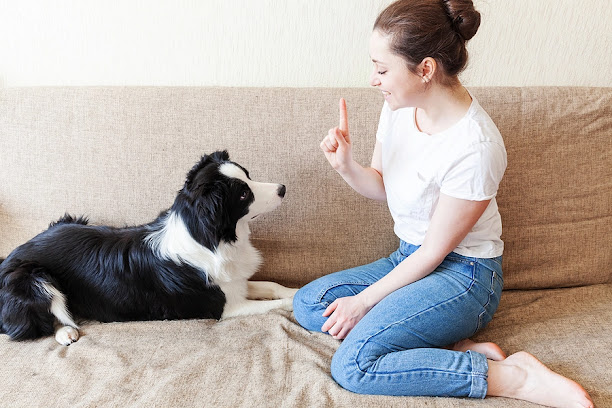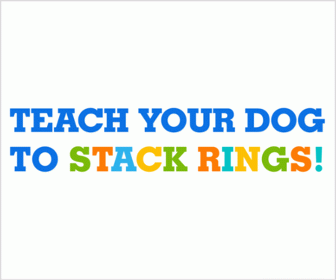Is your dog ignoring your commands? Instead of becoming increasingly frustrated and insistent until you get a reaction, consider some of the most typical problems that arise when training dogs, and take a step back to assess the situation from a more objective perspective.
1. Low-Value Rewards: Do You Think Your Rewards Are Fairly Compensation?
The idea that dogs serve as our servants with no other motivation than to make us happy is a romantic and difficult myth to disprove. According to the Association of Pet Dog Trainers, dogs are opportunistic creatures who constantly ask themselves "what's in it for me?" (APDT).
The difference between a dog who is eager to work and one who couldn't care less can often be attributed to the use of goodies. In the beginning of training or when there are distractions around, using low-value treats (like as kibble) can be counterproductive if your dog isn't pleased by them.
Keep to treats that are chewy, aromatic, and cut into small pieces. Instead of being distracted by a treat that would last for a longer period of time, your dog will be able to rapidly devour the reward and return his attention to you.
Do you have a recommendation? Use what renowned physician, trainer, and author Dr. Ian Dunbar dubs "the Ferrari of dog treats" Liver that has been dried in the freezer.
2) Low Rate of Reinforcement: Are You Missing Out on Rewarding?
It's possible that your dog will choose other activities over training, especially when they're just starting out or when there are lots of distractions around.
The question is, why is it the case? The reason is undoubtedly that some stimuli are more compelling than others and deserve our undivided focus. Your dog may have been doing this for a long time if he has never had much formal training.
In order to keep your dog motivated and focused on you throughout training, increasing the rate of reinforcement by giving him more rewards for his accomplishments will educate him to prioritise you over the distracting surrounding cues.
Remember that in the beginning stages of learning you need a constant rate of reinforcement (providing incentives for every success), and only once your dog shows signs of reacting effectively can you go on to a variable schedule of reinforcement (where awards are given on a more or less frequent basis) (only giving treats for success every now and then).
3) High Criteria: Are You Asking Too Much at Once?
In this case, the adage "be a splitter and not a lumper" is applicable. It's tempting to try to train a brand-new habit in one sitting. When your dog stops doing what you ask, you may start to wonder if you've been asking too much of him. In reality, when dogs don't obey an order, it's usually because it's too complicated for them to figure it.
Don't make things impossible for your dog right away; instead, divide the task into smaller, more manageable chunks. If you wanted to train your dog to touch the tip of a target stick with his nose, you could start by rewarding him for contacting ANY area of the stick.
Once your dog has mastered this, you can progress to rewarding him just when he touches the rounded point at the end of the stick.
In order to keep your dog from hitting a training plateau, it's important to keep sessions short and sweet.
Check out the brain training for Dogs course now. It’s great for eliminating any bad behaviors by tapping into your dog’s hidden intelligence... Click here…
4) Excessive Distractions: Is It Too Busy?
To maximize your dog's learning potential, begin your training sessions in a calm, distraction-free environment.
Once your dog has mastered the activity in the quiet room, you may move on to asking him to do it in increasingly noisy environments. Later, move on to more complex environments like a dog park, a busy street, or even a backyard.
Because you haven't laid the groundwork for the behaviour yet, your dog might not respond if you try to start on a busy street or at the dog park.
5. Inadequate training: Is this your dog's first time in training?
The dog may have learnt to ignore the handler and engage in disobedient conduct if the handler has a history of being inconsistent and failing to follow through with the dog.
Due to the novelty of the concept, the early phases of training might be challenging for dogs who have never been socialized or disciplined.
By engaging in reward-based training approaches, like those outlined in Adrienne Farricelli's Brain Training for Dogs course, the handler can make herself more interesting and therefore more listenable to the dog.
6) Unclear Cues: Are You Confusing Your Dog?
Make sure everyone who is teaching the dog is on the same page and constantly uses the same command cue. If your dog repeatedly ignores a particular command, you may want to look into why.
It's not unusual for students to encounter a household in which the mother calls the dog with "come," the father uses the dog's name, and the children just reply, "here!" Avoid asking for the same thing in different ways, and make sure your body language matches what you're saying. Animals like dogs rely more on nonverbal clues like body language than on verbal ones.
If you keep repeating the same commands over and over, your dog will eventually wait for you to finish your sentence before responding to you.
7) Frustration Buildup: Are you Getting Frustrated?
Dogs have a keen understanding of body language and are experts at reading expressions of anger. Dogs tend to withdraw rather than become more cooperative as their handlers become increasingly frustrated.
When ending a training session on a good note, it is helpful to ask the dog to perform a behaviour he is already familiar with (such as a sit) and then to praise him. If the exercise was too difficult for your dog the first time around, you can attempt it again at a later date, perhaps by breaking it down into even smaller segments.
Keep in mind that your dog will respond to intimidation by sending you appeasement signals and default behaviours rather than responding to your commands if you start raising your voice, leaning down, or getting in his face.
8) Emotional Problems: Are Emotions Getting in the Way?
Inability to train a dog who is scared, worried, or tense is compounded by the dog's emotional state. This is because the dog's cognitive function is impaired because he is frequently in a fight-or-flight mode, making it difficult for him to learn.
If this is the case, you may need to start with less stressful environments and build up your dog's tolerance to new stimuli gradually.
If your dog has a fear of thunder, for instance, you shouldn't force him to listen to recordings of storms at full power; instead, you should gradually increase the volume until your dog recognises the sound but isn't terrified by it.
You would praise your dog while the sound is playing, and over the course of multiple training sessions, you would gradually increase the loudness. Desensitization is a standard method in canine behavioural modification.
9) Health Matters: Is Your Dog in Discomfort?
It could be a sign of illness or discomfort if your dog is ignoring you. If your dog was previously well-behaved but is now slacking off, it's wise to have a vet check for any underlying health issues. Poor posture, such as slouching, or reluctance to lie down may point to underlying orthopaedic issues.
There are a wide variety of reasons why a dog might not be able to complete a training session, including but not limited to illness, dislike of the surface being used for training, or even just plain bad weather.
A dog that is easily distracted may just need to go potty or drink some water. Think about how well you'd do on an exam if you had to hold it the whole time because you had to go to the bathroom.
10) Are You Forgetting to Brain Train Your Dog?
A lot of people don't realize it, but bored dogs may be a real problem. Still, many people are content to leave their dogs alone all day in front of the fireplace, where they can become bored and develop behavioral issues. A dog's basic secret to success in training is to stimulate their intellect.
Prior to domestication, dogs in the wild would spend the majority of their time helping with daily survival duties. Dogs still played important parts in human culture and society very recently in history.
This innate behavior is still present in modern canines. You may have seen a beagle's enthusiasm for scent tracking, the enthusiasm with which some terrier breeds dug, or the barking of a treeing coonhound at the sight of a squirrel or other prey item high in a tree.
Dogs, in contrast to people who may dread the 9 to 5, DESIRE to work, and when they are not given the opportunity to do so, they might develop behavioural issues, disobedience, and mental health concerns. When the remedy may have been as easy as giving Rover additional cerebral stimulation, many owners waste THOUSANDS on training.
The good news is that this issue can be resolved with the help of Brain Training for Dogs. Adrienne Farricelli CPDT-KA, a professional dog trainer whose work has appeared in USA Today, Everydog Magazine, Nest Pets, and more, is the author of Brain Training for Dogs, one of the first training programmes to focus on improving a dog's intelligence as well as teaching obedience, better behaviour, important skills, and tricks.
Adrienne's 21 engaging and easy-to-implement activities are designed to help you and your dog benefit from her creative and scientifically-proven ways. After completing Brain Training for Dogs, your pet will be better behaved and more obedient, and he may even learn to play the piano (yes, really).
Do you wish to initiate brain exercise? If you're interested in taking a look at my class, please do so at this link:
>>> Get brain training for dogs today <<<
There are several potential explanations for your dog's disobedience. Instead of giving up on training altogether, labelling your dog as difficult, or barking commands like a drill sergeant, try to take a step back and see what's really going on with your dog. Knowledge of the canine learning process should lead to improved instruction.


